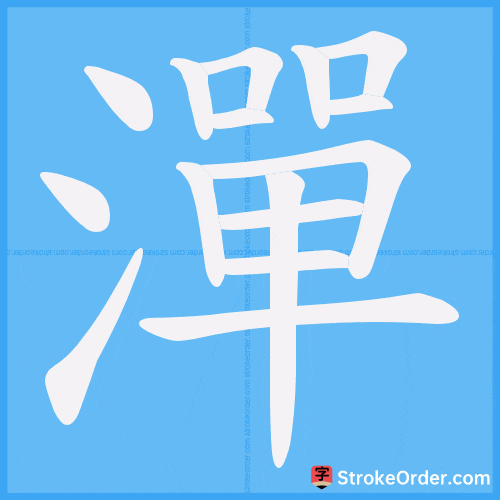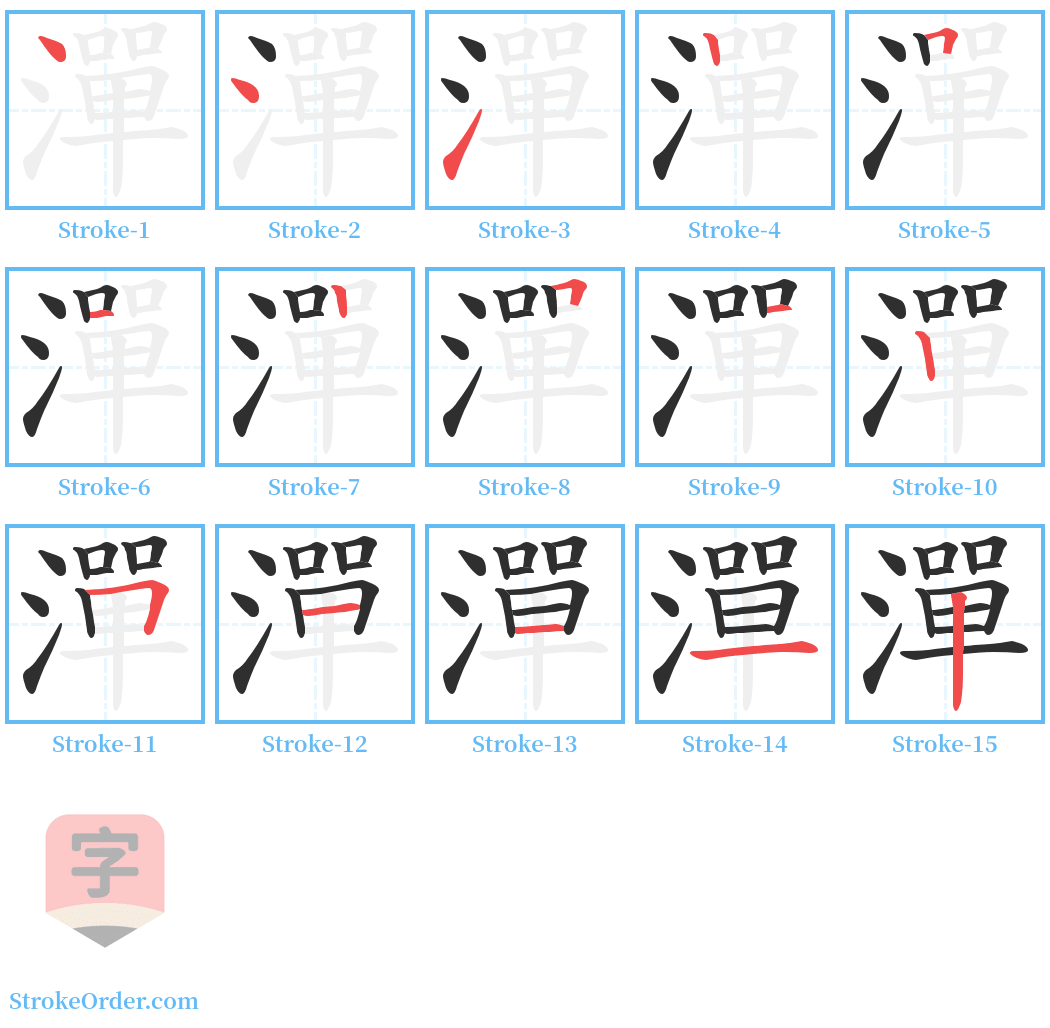潬 Stroke Order
Animated Stroke Order of 潬

Stroke Order Diagrams for 潬

Information of 潬
Pinyin
tān、 shàn
Radical
氵
Strokes
15 strokes
Usage
★★
Definition
潬:
1. Anciently the same as "滩", a sandbank in the water.
1.古同“滩”,水中沙堆。
2. 〔涴(wǎn)~〕also written as “蜿蜒”, referring to the (water flow) that is gracefully winding and meandering.
2.〔涴(wǎn)~〕又作“蜿蜒”,(水流)宛延曲折。
3. (as a noun) Sandbank. "Er Ya - Explanation of Water": "潬, sand emerges." In the commentary by Guo Pu of the Jin dynasty: "Nowadays, the sandbanks in the water are called 潬 in Jiangdong." In "Book of the Northern Qi - Volume 42, Biography of Yang Fei": "Also moved the ferry to Baima, where stones rise in the middle of the river, and both sides constructed fortresses, which took many years to complete."
3.〈名〉沙滩。《尔雅·释水》:「潬,沙出。」晋·郭璞·注:「今江东呼水中沙堆为潬。」《北齐书·卷四二·阳斐传》:「又移津于白马,中河起石潬,两岸造关城,累年乃就。」
4. (as an adjective) 潬潬: a description of twisting and interacting appearance. From Liu Xie's "Wenxin Diaolong - Fengshan": "The illustration says: '潬潬, scattered and tangled, all things are transformed.' This indicates the state of supreme virtue."
4.〈形〉潬潬:辗转互动的样子。南朝梁·刘勰《文心雕龙·封禅》:「图曰:『潬潬,棼棼雉雉,万物尽化。』言至德所被也。」